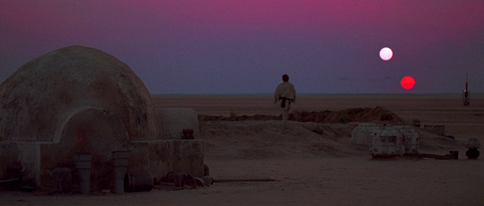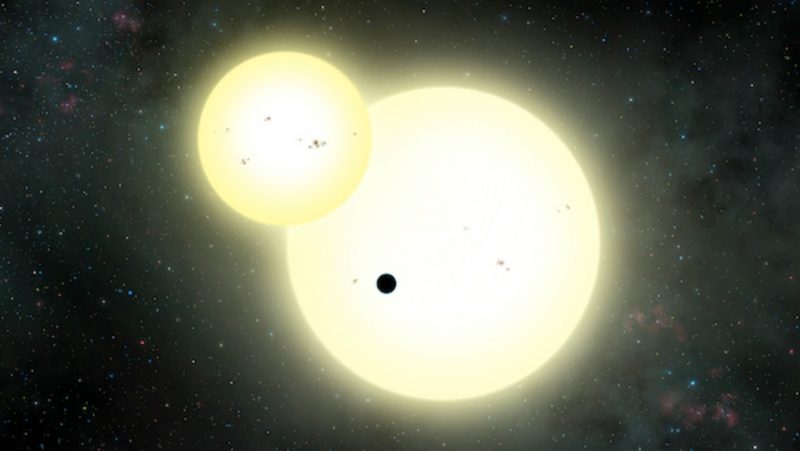
When our sun gets old, it’ll swell into a red giant whose outer layers will swallow the sun’s innermost planets, Venus and Mercury, and maybe Earth, too. But a new study – published in the peer-reviewed Astrophysical Journal on October 12, 2016 – suggests that planets orbiting two suns will have a different fate. According to the study, these so-called “Tatooine worlds,” which are named for the iconic planetary home of Luke Skywalker in Star Wars, might be expected to escape death and destruction by moving out to wider orbits.
Veselin Kostov at the NASA Goddard Space Flight Center led the study, in collaboration with Keavin Moore and Ray Jayawardhana, both of York University in Toronto, Canada. Kostov said in a statement:
This is very different from what will happen in our own solar system a few billion years from now, when our sun starts to evolve and expand to such a tremendous size that it will engulf the inner planets, like Mercury and Venus and possibly Earth too, faster than they can migrate out to larger orbits.
It seems that if we had a second star in the center of our solar system, things might go differently.

Why do we care about planets orbiting two stars? Because there may be so many of them! Multiple star systems are common in our Milky Way galaxy, and presumably beyond it.
In a binary system – where two stars orbit around a common center of gravity – if the two stars are close enough to each other, when one starts evolving and expanding into a giant, they exchange material and spiral towards each other. The result is what astronomers called a common envelope, a shared common atmosphere. In the process, the binary star system ends up losing a large amount of mass. It may even be destroyed in a supernova explosion.
But what about its planets?
These researchers simulated the fate of nine actual planets, each orbiting two suns, recently discovered by NASA’s Kepler mission. They found that even planets orbiting close to their stars will predominantly survive the common envelope (or shared solar atmosphere) phase.
One outcome, the researchers said, is that the planets can migrate to farther orbits:
… similar to what it would be like if Venus moved out to where Uranus orbits our sun. In some cases, planets can even reach more than twice the distance to Pluto.
Interestingly, when there are multiple planets orbiting a binary star, some can be ejected from the system, while others can switch places or even collide with their stars.
Ray Jayawardhana said:
Given the exciting recent discoveries of planets circling binary stars, some with orbits similar in size to that of Mercury around the Sun, we were curious to explore the ultimate fate of these Tatooine worlds.
We found that many such planets are likely to survive the messy and violent late stages of their stars’ lives by moving farther out.

Bottom line: Astronomers are beginning to find planets orbiting two suns. A research group recently explored the fate of such planets as their suns age. They learned that these Tatooine worlds, as they’re called, might be the ultimate survivors, moving farther out in stellar systems where two aging stars might be aging, exchanging material, spiraling together, and even possibly exploding as supernovae.











